-
History & Society
- Education in Pre-war Hong Kong
- History of Taikoo Sugar Refinery
- Hong Kong Products Exhibition
- Local Festivals Around the Year
- Post-war Industries
- Pre-war Industry
- The Hong Kong Jockey Club Archives
- Tin Hau Festival
- Memories We Share: Hong Kong in the 1960s and 1970s
- History in Miniature: The 150th Anniversary of Stamp Issuance in Hong Kong
- A Partnership with the People: KAAA and Post-war Agricultural Hong Kong
- The Oral Legacies (I) - Intangible Cultural Heritage of Hong Kong
- Hong Kong Currency
- Hong Kong, Benevolent City: Tung Wah and the Growth of Chinese Communities
- The Oral Legacies Series II: the Representative List of the Intangible Cultural Heritage of Hong Kong
- Braving the Storm: Hong Kong under Japanese Occupation
- A Century of Fashion: Hong Kong Cheongsam Story
Geography & EnvironmentArt & Culture- Calendar Posters of Kwan Wai-nung
- Festival of Hong Kong
- Ho Sau: Poetic Photography of Daily Life
- Hong Kong Cemetery
- Sketches by Kong Kai-ming
- The Culture of Bamboo Scaffolding
- The Legend of Silk and Wood: A Hong Kong Qin Story
- Journeys of Leung Ping Kwan
- From Soya Bean Milk To Pu'er Tea
- Applauding Hong Kong Pop Legend: Roman Tam
- 他 FASHION 傳奇 EDDIE LAU 她 IMAGE 百變 劉培基
- A Eulogy of Hong Kong Landscape in Painting: The Art of Huang Bore
- Imprint of the Heart: Artistic Journey of Huang Xinbo
- Porcelain and Painting
- A Voice for the Ages, a Master of his Art – A Tribute to Lam Kar Sing
- Memories of Renowned Lyricist: Richard Lam Chun Keung's Manuscripts
- Seal Carving in Lingnan
- Literary Giant - Jin Yong and Louis Cha
Communication & Media- Hong Kong Historical Postcards
- Shaw Brothers’ Movies
- Transcending Space and Time – Early Cinematic Experience of Hong Kong
- Remembrance of the Avant-Garde: Archival Camera Collection
- Down Memory Lane: Movie Theatres of the Olden Days
- 90 Years of Public Service Broadcasting in Hong Kong
- Multifarious Arrays of Weaponry in Hong Kong Cinema
-
History & SocietyGeography & EnvironmentArt & Culture
-
View Oral History RecordsFeatured StoriesAbout Hong Kong Voices
-
Hong Kong Memory
- Collection
- All Items
- Oral History
Recently VisitedOral History
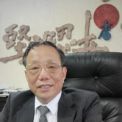
- An 8-year development bubble of Chit Shing after its establishment in 1969, Chit Shing began to t...
Chit Shing was established with a capital of $3,000 in a plant unit measuring less than 300 square feet at a monthly rent of $300. Machines purchased were paid back by installments. Chan Wah Cheung worked long hours in this plant, frankly admitting that he was very ignorant about everything during the company’s start up. Not knowing how to handle orders, buy and prepare materials or calculate costs, he asked trade veterans about everything. He also urged his former employer to outsource some orders for him processing. In the company’s early years, Chan Wah Cheung bought raw materials from a manager called Yiu at Tin’s Chemicals. Openly admitting that he was lacking funds, he requested Tin’s Chemicals to allow his new firm a 60-day credit period. Yiu appreciated Chan Wah Cheung’s frankness and determined to help this young man solve his cash flow problems. Chit Shing started with only one man when it was established in 1969 but later expanded to 70-80 workers by 1977/78. Business was booming during these years and labour costs were low. The factory operated every night until 2 am, producing stationery and then women's wallets. Reviewing his company’s accounts eight years after its establishment, Chan Wah Cheung was shocked to find that accumulated losses had reached around $500,000. His mother and the skilled master in charge of molding repeatedly advised him to close the business down.
Chan Wah Cheung summarised five reasons for his failure over this period. Firstly, the output value of the products was too low. Secondly, competition within the trade was intense. Thirdly, the company’s costing calculation was outdated and did not take utilities or other operating costs into account. Fourthly, prices were suppressed by the intermediary trading firms. Fifthly, payments by customers had fallen into arrears. In the early years of establishment, Chit Shing had to rely on trading firms for overseas orders. In the weekdays, Chan Wah Cheung visited the offices of these trading companies in Tsim Sha Tsui and Central. Lacking bargaining power, he was accustomed to prices being kept deliberately lowered by his contacts there. After making reviews, Chan Wah Cheung changed his strategy in 1978. He decided to abandon the production of women's wallets and instead contact only trading firms whose customers specialised in brands. He then switched to producing stationery for cartoon brands such as Snoopy, Disney, Star Wars and Hello Kitty, offering to his partners enhanced quality and guaranteed delivery. Chit Shing began to turn a profit. It eventually not only maintained its business, but also expanded to bag products. Chan Wah Cheung believed that as brand products generally carried higher prices, they offered more reasonable profits and larger, more stable order volumes. As Chit Shing’s business gradually moved into profitability, obtaining bank loans became simpler and the company was able to expand its plant and equipment. Chan Wah Cheung had mixed feelings, believing that running his business was just like sailing against the wind! When labour costs were low in the early 1970s, his company made losses, but then the company started to make profits when wages began to rise during the late 1970s. Chan Wah Cheung frankly admitted that taking into account the limited size of his plant and workforce, negotiations with trading firms were difficult. As a result, he felt he could only impress these firms by his sincerity and low prices.
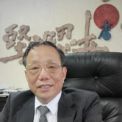
- Building up his business foundation gradually: knowledge of production, handling orders, manageme...
High frequency machines were invented by British engineers and initially used for telecommunications purposes. Only later were they used to weld plastic sheets. The welding process firstly used a copper mold to crop PVC films which were then placed inside a machine that used high frequency vibration to fuse the films and produce pencil cases, wallets, file covers and other products. Today, high frequency machines had little structural changes and just became easier to operate. When Chan Wah Cheung joined the trade at age 12, he was a press operator, working in several PVC products factories for five years. While there, he learned mold adjustment and machine maintenance and operation, but did not get involved in cutting, packaging and materials purchasing. Back then, small factory apprentices were divided into two divisions, with each type learning packaging and a choice of either pressing or cutting.
By the time he turned 18, Chan Wah Cheung was deputy head (i.e. assistant to the factory boss) of a factory which had installed both high frequency machine and sewing departments. While responsible for supervising workers, adjusting molds and machines, calculating delivery schedule and scheduling orders, the deputy head did not handle orders or deal with procurement matters. Factory owners ultimately considered orders and cost calculations to be trade secrets and generally would not assign these jobs to subordinate staff. As a result, Chan Wah Cheung lacked all-round experience when he started his own business. He therefore asked for advice about how to handle orders and bargain on price from several former employers. His past bosses appreciated Chan Wah Cheung’s hard working and were willing to guide him. They also outsourced processing orders to Chit Shing which then began to work as a processing manufacturer. Having studied only up to Form Two and then enrolled in an evening school for a few months, Chan Wah Cheung greatly regretted his low level of literacy.
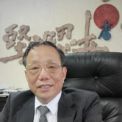
- Factories, workers and products at very beginning years of Chit Shing
Chit Shing’s first factory plant was located in a residential unit in Tai Kok Tsui. Due to inadequate space, it moved to Whampoa Street in Hung Hom three months later. Available at a monthly rent of $350, the new factory was located in an old building which had two units on each floor and a residential home next door. When the high frequency machine operated, its noise disturbed the neighbours. It even caused trouble to aircraft’s flight safety, causing the electricity company to cut power supplies. Chan Wah Cheung believed that about 70% of the factories in the 1960s and the 1970s were family-based squatter factories. The factories equipped with high frequency machines tended to be concentrated in Tai Kok Tsui and Western District. In 1974, Chan Wah Cheung expanded his factory plant in order to accommodate more machines and increase production output. He subsequently moved Chit Shing to a formal factory premises in Tsat Po Street at San Po Kong, sharing a 2,400-square-foot plant with a factory knitting clothing labels. Chit Shing moved into the adjacent 3,000-square-foot unit two years later and eventually expanding to 8,000 square feet as he gradually increased production output. In 1982/83, Chit Shing moved to Ng Fong Street in premises with an area of 12,000 square feet. When Chit Shing started up, its staff consisted of just Chan Wah Cheung and his younger brother. The whole factory had only “one table, two stools and one machine”. His younger brother was responsible for cutting and pressing, using techniques he had learned from Chan Wah Cheung. In those years, the premises were equipped with a cutting machine for cropping raw materials. When the factory moved to Whampoa Street, four or five additional workers were employed.
In the early years, Chit Shing mainly employed young women who used both hands and feet to operate the pressing machines. As it was easy to learn on the job, the workers were not required to have previous working experience and could earn a daily wage of $4 for 10 hours’ work. After learning the basic techniques, Chan Wah Cheung’s younger brother also helped manage miscellaneous duties around the factory. When Chit Shing moved to its 3,000-square-feet plant in 1976, different departments were set up. They included cutting, packaging, pressing machine and a handyman section handling product components. A printing department was added later. While stationery production involved five to six processes, wallet production involved about 30 processes and caused a lot of wastage. This resulted in heavy losses for Chit Shing. At this time, Chit Shing did not handle non-OEM orders for "licensed products", but just produced samples according to the drawings supplied by customers. Production was only started if customers were satisfied with the samples and had placed orders. After Chit Shing switched to doing OEM business, the company strengthened its internal management, delivery standards and quality control. Trading firms occasionally sent people to inspect the factory and were satisfied with Chit Shing’s performance.
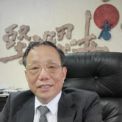
- Worker recruitment and management at the beginning of his business, Difficulties of picking up wo...
When Chit Shing was first established, female workers worked 10 hours a day while Chan Wah Cheung and his family members worked 15 hours each day. Working on Sundays was not unusual. When Chit Shing moved to Tsat Po Street in the mid-1970s, labour legislation restricted the working hours of female and child workers and overtime required a special application. During that time, Chan Wah Cheung’s elder brother and younger sister successively joined Chit Shing and the factory adopted a family-style operation. Chan Wah Cheung’s younger sister was in charge of packaging and his younger and elder brothers oversaw cutting and handling orders respectively. Even his mother occasionally came along to help out. Chan Wah Cheung himself took overall responsibility for factory affairs. While the family members were on Chit Shing’s regular payroll, their wages were not formalised. When the factory plant was expanded to 3,000 square feet, Chit Shing had 50-60 workers who were assigned to different departments such as engine room, cutting and packaging. When it moved to a 12,000-square-foot plant in Ng Fong Street in 1983, Chit Shing’s staff increased to 150-160 people. Chan Wah Cheung thought that smaller factories didn’t really need formal personnel management as the supervisors communicated directly with workers. Human resources departments was set up afterward. In Chit Shing’s early years, workers were recruited by the relevant departments and salaries were jointly determined by Chan Wah Cheung and Chit Shing’s respective department heads. Chan Wah Cheung admitted that when the factory was expanded to 12,000 square feet, it still operated in a squatter-style with no practices of staff appraisal and training. Chan Wah Cheung believed that easy communication was probably the biggest advantage of squatter-style factories as management could instantly assess the feelings of employees and correct any problems accordingly.
In the early 1980s, industries such as electronics, wigs, toys and jeans were competing with plastics factories for staff. Chit Shing had a high employee turnover rate and a worker with three or four years’ service was already considered to be a veteran. Employee turnover was so high that Chan Wah Cheung could not remember the name of all his staff. To retain workers, Chit Shing improved the plant environment and installed air-conditioning. Chan Wah Cheung believed that PVC products factories did not pose major safety issues. When Chit Shing operated in San Po Kong, workers were equipped with protective shields according to labour law standards and there were no serious industrial accidents. It was difficult to recruit young female workers when Chit Shing was in San Po Kong, as they generally preferred working in electronics and toy factories. Chit Shing employed old women as packers whom Chan Wah Cheung regarded as diligent and fast. The company mainly recruited young people as press operators as a means of attracting male workers. Industries were thriving in the period from 1980 to 1995 and all kinds of manufacturing industries were competing for workers. With factories starting to be relocated to China from 1995 onwards, local industries began to decline. Chit Shing set up its premises in China in 1985, leveraging cheap mainland-based labour to enhance its competitiveness.
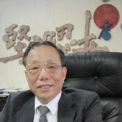
- Switching path of production line: from Hong Kong, Macau, Shenzhen to Dongguan, OEM business focu...
As operating costs began to rise in the early 1980s, Chit Shing gradually moved its production lines out of Hong Kong into a rented factory premise in Macau in around 1983. Sadly, this venture was closed down fairly soon due to high transportation costs. In 1985, Chit Shing opened a factory in Shenzhen’s Luohu reservoir area taking advantage of its close proximity to the mainland-Hong Kong border and convenient transportation. Chit Shing leased the plant from the local village, paying $4 rent per square metre and renewing the lease every three years. The mainland factory operated as a foreign enterprise. Chit Shing transported raw materials from Hong Kong to the Shenzhen factory for processing and the finished products were then shipped back to Hong Kong for export to overseas. Chan Wah Cheung recalled that in the early stage of northward relocation of Hong Kong’s factories, these factories were generally run in co-operation with local residents. As the then inexperienced mainlanders had little management knowledge, it was difficult to maintain quality and schedule of delivery. Subsequently, Hong Kong factories that had been relocated tended to adopt the PSM approach and the village and town authorities in the Mainland were like landlords, enjoying factory rents and management fees only. When Chit Shing set up its factory in China in 1985, mainland workers’ daily wage of $4 was 10 times lower than what the workers earned in Hong Kong. However, Chit Shing failed to make the best of this advantage. He earned limited and the factory had eventually to be move out. Chan Wah Cheung cursed his bad luck.
In 1985, there was a transition in Chit Shing’s OEM business which saw it shift focus from European and American customers to Japanese companies such as Muji, taking orders through trading firms specialising in Japanese customers. In those days, Chit Shing’s scale and output were limited. As the company could not deal directly with Japanese customers, it had to rely on trading firms as intermediaries. Chit Shing had many years of OEM business experience and they could easily satisfy Japanese customers’ quality and delivery demands. As production and unit costs would be lowered following a move in Shenzhen, overseas customers agreed with Chit Shing’s decision to relocate its production lines there. Chit Shing had subsequently operated its factory at Luohu reservoir for nine years and the plant eventually expanded to 30,000 square feet. Due to a drastic increase in factory rent, Chit Shing bought a factory plant in Dongguan in 1996 and subsequently moved all of its operations to workshops covering an area of 120,000 square feet there. At its peak, Chit Shing’s Shenzhen plant employed 500-600 workers while the Dongguan plant had 3,200 workers. When Chit Shing relocated its factory to China in 1985, Chan Wah Cheung was so confident about the prospects in the mainland that he ceased operation in the Hong Kong plant. When he subsequently laid off his production workers in Hong Kong, he retained only departments such as orders, purchasing, accounting and shipping, transforming the plant into a warehouse and cargo transfer station. Nowadays, most Hong Kong manufacturers would move departments such as purchasing and accounting to China as well. Considering his staff’s employment issues, Chan Wah Cheung still retained these departments in Hong Kong. When reviewing local factories’ moving north, Chan Wah Cheung pointed out that due to the mainland partner’s poor management during the early years, many pioneer manufacturers suffered from losses and plant closures. He felt the situation only improved when Hong Kong manufacturers took over direct management of their relocated operations.
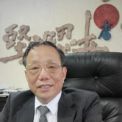
- ‘Squatter-style’ personnel management still remained after factory relocation to the Mainland, ...
The size of its workforce, factory area and the scale of turnover increased greatly after Chit Shing relocated its factory to China. Workers’ wages in the mainland were much lower than in Hong Kong and Chit Shing found it easy to recruit workers as he provided them with food and accommodation. Chan Wah Cheung conceded that after setting up production facilities on the mainland, most companies still operated as squatter-style factories even when employing over 10,000 workers. The factory owner remained with "one-man rule" to manage the entire factory. As staff had not received relevant professional training in areas such as management and procurement, there was serious mismatch of personnel with jobs and a lack of systematic operation. As a result, the old-style factories had many problems and closed down one after another. Citing one example, Chan Wah Cheung pointed out that many migrant employees were diligent workers who simply got promotion to supervisory level without receiving any management training. He went on to add that as workers had a high turnover rate, authoritarian style of management became ineffective. If they were to survive, enterprises would have to be run by systematic practices and to improve labour relations.
In reviewing Chit Shing’s performance after its shift to OEM production, Chan Wah Cheung concluded that from 1978 to 1985 the company made only marginal annual profits. The key reason for this was that it had failed to grab the golden opportunity after relocating to China. Chan Wah Cheung thought there were two main factors for this shortfall. Firstly, Chit Shing’s product output value was low. Secondly, Europe and the United States refused to allow the toxic and insoluble PVC materials as the concept of environmental protection had increasingly gained popularity there. Some European countries had even banned the import of PVC products altogether. This significantly reduced demand for Chit Shing’s products. In 1989, the company began to produce bags which became its main business and gradually abandoned high frequency machine items. Bags had a high output value and demand was great. Using cloth and nylon as the main materials, techniques and machinery for making bags were different from those of PVC products. Chit Shing also started to find orders from new trading companies. To this end, the company adopted a comprehensive development policy after setting up its factory in Dongguan. Specific departments established as a result, such as screen printing, embroidery, injection molding, pressing, paint spraying, hooks and zippers. This kind of vertical integration of production steps made it possible for the company to produce goods with guaranteed quality and timely delivery. However one-stop production required higher costs. Because of this, this practice was not popular in the PVC products industry. Chit Shing moved towards one-stop production against all odds, and therefore was favoured with orders from many Japanese brands. Today, Japanese customers constituted around 80% of the company’s business, while U.K. and U.S. customers accounted for the remaining 20%. Chan Wah Cheung regarded Chit Shing a medium-sized manufacturer in the industry, compared to the largest manufacturers which employed up to 10,000 workers. A bag factory of average size employed 300-500 workers.
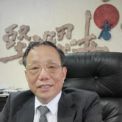
- Chit Shing becoming a social enterprise in recent years (1), Establishing a branch factory in Pin...
In the early 1970s, Chit Shing was a family-style business. Chan Wah Cheung’s brothers and younger sister carried out their duties and received wages from the company. In 1978, Chit Shing began to make profits and was reorganised as a joint-stock company with family members holding shares. After production was moved to China in the mid-1980s, Chan Wah Cheung’s three siblings went to China during the day and came back to Hong Kong at night where they continued handling matters for the mainland factory. At the same time, Chit Shing relocated management staff from Hong Kong to work at the mainland factory. In 2004, Chan Wah Cheung convinced his family members to give up their shares in Chit Shing and retire to enjoy life at their old age. At this point, the company was reorganised into a non-profit social enterprise with its profits contributed to charity in support of the People of Fortitude International Mutual-aid Association for the Disabled.
After the restructuring, Chan Wah Cheung continued to run Chit Shing as usual, contributing his effort to the charity as a volunteer. Efficiency and profitability were still emphasised to ensure smooth charity work. The Dongguan plant had become overwhelmed with bag orders in recent years. To ease the resultant pressure, Chit Shing opened a branch factory in Shenzhen’s Pinghu area which employed 700 workers. Chan Wah Cheung believed that the local government wanted Hong Kong’s manufacturers to stay in and around Dongguan. As the area was home to many low-, mid- and high-value factories in various industries, low-end factories’ withdrawal would undermine the completeness of the production supply chain. Chan Wah Cheung stressed that Hong Kong manufacturers had to raise management standards and improve the working conditions and wages. Support and welfare were therefore Chit Shing’s priorities when the company set up its factory in Dongguan in 1995.
Copyright © 2012 Hong Kong Memory. All rights reserved.
| Set Name |





